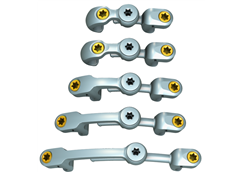Academy of Orthopaedic Surgeons, Cameron R. Niswander, BA, of the University of Colorado, and colleagues presented a multicenter analysis focused on the Cross-Link or DTT device effectiveness.
Niswander and colleagues had the conclusion that there were no obvious improvement for young patients who had crosslinks compared with patients who didn’t. And they also addressed the financial issue:The discontinuation of this device use could save roughly $1,000 per surgery.In other words: Too much cost (1000$/case) for a Unexisting benefit (any improvement).
Our Comments:
1. The study found no differences in radiographic outcomes, clinical outcomes, or complication rates between groups of patients with and without the use of crosslinks.They are talking about no positive benefit but what about preventing the risk of negative outcomes as potential complications caused by inestability? Where do they place Safety or Risk coverage?
2.- The sample of 500 patients, 377 with crosslinks and 123 without crosslinks. From our point of view, the sample of patients without a DTT device is not big enough to evaluate the risk.Which are the stadistics and how many cases do you have to perform to have the “windshield wiper effect”? Maybe it did not happen in the 123 cases but what about the next ones?
3.- The cost of the Cross-Link (1000$) represents 5,5% of the average price for scoliosis surgery (18.000 $). Would you pay that amount and avoid risks? What would be the costs involved with the
complications caused by the “Windshield effect ” if it occurs.
Maybe I am right or wrong, but I would pay an additional 1000$ if the scoliosis surgery patient were my daughter. What would the rest do?
 |
| CrossLinks |
